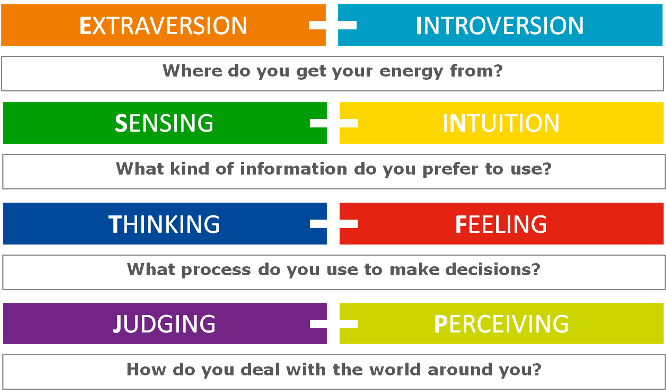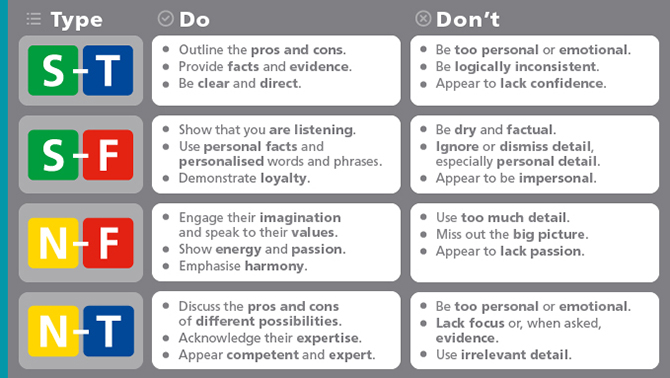Persuasion, people and personality
John Hackston Head of R&D at OPP
It often feels like everyone is trying to get us to do something – and of course, we are all in the business of trying to persuade other people too. Sometimes we are successful, sometimes we’re not; sometimes others are successful in influencing us and sometimes they’re not. To know more about why this is, a framework for understanding personality and behaviour can provide unique insights, and this is where the MBTI instrument can be really useful.
The MBTI instrument looks at four aspects of our personality that combine together dynamically to capture the fundamental elements of who we are. When it comes to persuading and being persuaded, two areas that are especially important are the information that we prefer to use (Sensing or iNtuition, S or N), and our preferred decision-making process (Thinking or Feeling, T or F). Combining these two preferences means that each of us can be sorted into four categories: ST, SF, NT, or NF.

The way in which we can be persuaded to buy things is a good example of how this works.
- ST will want to focus on the specifics and details of the product, and then to make a logical, objective decision on the basis of this information. To persuade or sell to these people, you should state the facts, making the tangible features and benefits clear.
- SF will also focus on specifics and details, but the decision will be made on how those specifics impact on people. To persuade these people, you need to treat them as an individual and meet their specific individual needs.
- NF will focus on the big picture, and the decision will be made depending on the impact on people and values. To persuade these people, you need to speak to their vision and their values.
- NT will put the emphasis on possibilities and logical options. To persuade these people, you need to acknowledge their expertise and present them with innovative options from which they can make a logical choice.
This may seem a little theoretical, but it does work. For example, in a 2012 book called Lessons on Profiting from Diversity, researcher Holly Buchanan described her work with an online women’s fitness clothing retailer, who were not achieving the sales return from electronic mail that they were hoping for. The sales copy was written by an owner of the company, who had preferences for NT, but Buchanan’s analysis suggested that many of the customers had preferences for SF. She rewrote the copy in a way that was more likely to appeal to the SF preference, and this resulted in increased sales, with a 27% higher click through rate on the website.
Now you’re probably not a professional copywriter, but one way or another it’s inevitable that you sometimes need to ‘sell’ to people – be that selling actual products and services, or selling your ideas to colleagues, friends and family. Research by Pia Hautamäki shows that while business buyers expect a number of things from a salesperson, the most important factor is a sales approach that matches their personality. Of course, in practice you probably don’t know the Type of the person you wish to persuade; you won’t have had the luxury of them having taken the MBTI questionnaire and sharing their best-fit Type, but you can still use these ideas. Using Type in Selling talks about how to pick up clues about a customer’s Type from what they say and do – and then how to adapt your own behaviour to match that of the customer. And this isn’t just important for selling; it applies to any situation where you need to influence and persuade other people, or even to situations where you just want to build a good relationship with a client.
Here’s a quick guide for working with each of the four Type groups described:

Here at OPP, our consultancy team use these principles to deliver interventions that will dramatically enhance communication.
For more on Type and persuasion, tune in to our webcast, or read this blog post.